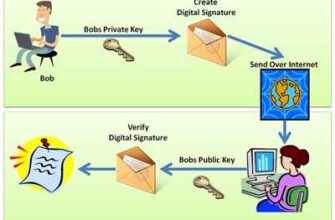
Building a mobile application can be an exciting and rewarding process. Whether you have a business that needs a mobile-friendly solution or you’re a developer looking to explore the next stage in mobile technology, there are important steps to take to ensure your app is a success. This article will guide you through the essential phases of mobile app development, including wireframes, design, development, testing, and launch.
One of the first steps in building a mobile app is creating wireframes. Wireframes are visual representations of the app’s user interface (UI) and the flow of its features. This allows the development team to have a clear understanding of what the final app will look like and how users will interact with it. Wireframes are a valuable tool for both the designers and developers, as they provide a blueprint for the app’s layout and functionality.
Once the wireframes have been created, the design phase can begin. In this phase, the app’s interface and overall look and feel are developed. This includes choosing the colors, fonts, and images that will be used throughout the app. It’s important to consider the target audience and the goals of the app when designing the interface, as it should be both visually appealing and user-friendly.
After the design phase, the development team can start building the app. This involves writing the code that will bring the wireframes and design to life. There are different technologies and programming languages that can be used to build a mobile app, such as Swift for iOS or Java for Android. The choice of technology will depend on the specific requirements of your app and the skills of your development team.
As the app is being built, it’s important to regularly test and make any necessary changes or improvements. Quality assurance should be a priority throughout the development process to ensure that the app is free of bugs and performs well on different devices and platforms. This includes testing the app’s functionality, usability, and performance, as well as ensuring compliance with relevant laws and regulations.
Once the development and testing phases are complete, the app is ready for launch. This means making the app available to the public through app stores or other distribution channels. Before launching, it’s important to have a strategy in place to promote the app and generate interest from potential users. This may include marketing campaigns, outreach to influencers, and other tactics to increase visibility and downloads.
In conclusion, building a mobile application is a complex process that involves various stages, including wireframes, design, development, testing, and launch. Each stage requires careful planning, collaboration with a skilled team, and attention to detail. By following these steps, you can create a successful mobile app that supports your business goals and provides a valuable solution for your target audience.
- Mobile Website Design 101: Build a Mobile‑Friendly Site
- Why React Native
- A useless app doesn’t grow your brand
- How to create a mobile wallet app
- Discovery stage
- Digital wallet solution
- Design phase
- Development phase
- API-driven neobank software
- Launch the application
- Ongoing development and support
- Transform your organisation
- Video:
- Make Your Own Smartphone 🔥🔥🔥
Mobile Website Design 101: Build a Mobile‑Friendly Site
Creating a mobile-friendly website is essential in today’s digital era. With the increasing number of mobile users, it is important to make sure your website is accessible and easy to navigate on mobile devices. This article will provide insights and tips on how to design and build a mobile-friendly site.
When designing a mobile website, consider the needs and preferences of your target audience. Mobile users have different requirements than desktop users, including a smaller screen size and limited data plans. Therefore, it’s important to optimize your website to provide a seamless browsing experience.
One important aspect to consider is the use of responsive design. Responsive design allows your website to adapt to different screen sizes and resolutions, providing a consistent user experience across devices. This includes making sure that images and content are properly scaled and positioned for optimal viewing.
In addition to responsive design, consider implementing features that are specifically tailored for mobile devices. This can include touch-friendly navigation menus, swipe gestures, and quick access to important information. These features can greatly improve the user experience and make your website more user-friendly on mobile devices.
Another important consideration is the performance of your mobile website. Mobile users often have slower internet connections than desktop users, so it’s crucial to optimize your site for fast loading times. This can be achieved by minimizing the use of heavy graphics, compressing images, and optimizing code and scripts.
When it comes to security, mobile websites must also take into account the potential risks associated with mobile devices. Implementing secure authentication and encryption measures can help protect user data and prevent unauthorized access. Two-factor authentication and API-driven solutions are just a few examples of the technologies that can be used to enhance security on mobile websites.
Building a mobile-friendly website is an ongoing process. As technology and user expectations continue to evolve, it’s important to stay up-to-date with the latest trends and best practices. Regularly conduct usability tests and collect user feedback to improve the functionality and usability of your mobile site.
In conclusion, a mobile-friendly website is a valuable asset in today’s mobile-driven industry. By creating a site that is optimized for mobile devices, you can provide a better user experience, reach a wider audience, and improve the overall value and reputation of your brand or business.
Why React Native
When it comes to building a mobile app, there are several software options available. However, if you’re looking for a reliable and valuable solution, React Native is a technology you should consider. With React Native, you can create an API-driven app that works seamlessly across different platforms.
One of the most significant benefits of using React Native is its ability to improve the speed and efficiency of creating a mobile app. By using a single codebase, you can build an app that works on both iOS and Android devices. This saves time and resources, as you don’t have to develop separate apps for each platform.
Another advantage of React Native is its easy-to-use interface. The framework provides developers with powerful tools and components that make the app development process smoother. With React Native, you can quickly build a high-quality app that meets the needs of your business.
Moreover, React Native is known for its ability to handle sensitive areas, such as digital payments and compliance with laws and regulations. By using React Native, you can create a secure and robust app that complies with industry standards.
Furthermore, React Native has a strong ecosystem, with a thriving community of developers who constantly contribute to its improvement. This means that if you encounter any issues or need guidance, you can rely on the support of the React Native community.
Overall, React Native is an essential tool for building mobile apps. Whether you’re launching a new app or transforming your existing one, React Native provides the necessary tools to create an awesome user experience.
In conclusion, if you’re looking to build a mobile app, React Native is the way to go. Its benefits, including easy steps to create a cross-platform app, improved reliability, and valuable solutions, make it the go-to choice for many businesses.
A useless app doesn’t grow your brand

In today’s digital age, having a mobile app for your business is essential. However, simply having an app that is available on different devices is not enough. It’s important to create a valuable app that not only works well but also helps your brand grow.
One of the first steps in building a mobile app is to determine the areas of your business that the app will support. Will it be a mobile-friendly interface of your website, or will it have different features and functionality? Consider what your customers need and how the app can provide an awesome experience for them.
Another crucial aspect to consider when building an app is the platform on which it will be launched. Will it be a native app for iOS or Android devices, or will it be a web app that can be accessed from any device? Knowing your target audience and their preferred devices will help you make the right decision.
When it comes to the features of your app, it’s important to prevent sensitive information from being exposed. This means implementing security measures to protect user data and enable secure transactions, such as payments using a digital wallet or credit card. Make sure to include tools and software that provide assurance of compliance with industry standards.
Creating wireframes and obtaining feedback from users and stakeholders is an essential part of the app development process. This allows you to iterate and improve your app based on user needs and expectations. By considering the overall user experience and incorporating their feedback, you can create an app that meets their needs and grows your brand.
In conclusion, building a mobile app is not an easy task. It requires careful planning and consideration of various factors. However, by following these essential steps and using the right tools and solutions, you can create a valuable app that not only works well but also helps your brand grow in the digital platform.
How to create a mobile wallet app
In today’s digital age, having a mobile wallet app is becoming increasingly important. With the rise of mobile devices and the convenience they offer, more and more people are turning to mobile wallets for their financial needs. If you’re looking to create a mobile wallet app, it’s essential to understand the steps involved and the best practices to follow.
Firstly, it’s important to decide whether you want to build a native mobile app or a mobile-friendly website. Native apps are designed specifically for a particular operating system, such as Android or iOS, while mobile-friendly websites can be accessed through any web browser. Native apps generally provide a better user experience and can take advantage of the device’s features and functionalities.
Next, you’ll need to consider the technology stack you’ll be using to build your mobile wallet app. This includes the software and frameworks that will support your app’s development. For example, if you’re building an Android app, you’ll need to know Java or Kotlin. If you’re building an iOS app, you’ll need to know Swift or Objective-C.
One of the key features of a mobile wallet app is its security. It’s important to implement encryption technologies to protect sensitive user information and ensure secure transactions. Additionally, integrating with a trusted payment gateway is essential for making payments and handling financial transactions.
During the development process, it’s crucial to gather feedback from users and continuously iterate on the app to improve its usability and address any issues. This feedback loop is essential for enhancing the overall user experience and growing your user base.
When it comes to the design of your mobile wallet app, it’s important to create an intuitive and user-friendly interface. The design should be visually appealing, reflecting your brand’s identity and providing a seamless experience for your users.
Once your mobile wallet app is ready, you’ll need to go through a quality assurance stage to ensure the app is bug-free and performs as expected. This includes testing the app on different devices, operating systems, and network conditions.
Launching your mobile wallet app is an exciting phase that includes marketing and promotion efforts to create awareness and attract users. Leveraging social media, influencers, and other marketing channels can help you reach a wider audience and drive app downloads.
In the rapidly evolving mobile wallet industry, it’s important to stay updated and keep exploring new technologies and features. Keeping up with the latest trends and industry standards will ensure that your app remains competitive and meets the evolving needs of your users.
In conclusion, creating a mobile wallet app requires careful planning, a skilled development team, and a deep understanding of technology and industry trends. By following the steps outlined in this article, you can build a mobile wallet app that provides value to your users and helps them manage their finances in a secure and convenient way.
Discovery stage
During the discovery stage of building a mobile application, it is important to gather all the necessary information before starting the development process. This stage involves understanding the objectives of the application, the target audience, and the specific requirements of the client. It sets the foundation for the entire development process.
One of the first steps in the discovery stage is to create wireframes. Wireframes are visual representations of the application’s interface, allowing you to get a better feel for how the app will look and function. This helps the development team and the client to have a clear understanding of what the final product will be like.
Another important aspect of the discovery stage is to analyze the potential value and benefits that the mobile application will bring to the organisation or brand. This involves looking into the analytics of existing websites or other mobile solutions and making a decision on how to best integrate the features into the new mobile app.
When building a mobile app, it is also crucial to consider the technical aspects such as platform, technology, and software solutions. This requires a reliable development team with expertise in mobile app development. They should be able to help you choose the most suitable tools and technologies to ensure that the app is built with the best approach.
Security is another important consideration during the discovery stage. Mobile apps may require additional authentication and encryption features to comply with laws and ensure the safety of user data. This should be discussed and implemented in the early stages of the development process.
Furthermore, the discovery stage of building a mobile app should also involve ongoing support and salesforce integration. This means creating a reliable support system to help users with any issues they may encounter, as well as integrating the app with a CRM system to ensure better sales and customer relationship management.
Overall, the discovery stage is a crucial part of the mobile app development process. It sets the foundation for the entire project and helps the development team to understand what the client wants and needs. With proper planning and analysis, the discovery stage ensures that the final mobile app is an awesome solution that meets all the requirements and exceeds expectations.
| Key Points |
|---|
| – Gather all necessary information before starting development |
| – Create wireframes to visualize the app’s interface |
| – Analyze potential value and benefits of the app |
| – Consider technical aspects like platform and software solutions |
| – Ensure security with authentication and encryption features |
| – Provide ongoing support and integrate with salesforce |
Digital wallet solution
If you’re looking to build a mobile digital wallet solution, there are a few key steps you’ll need to take. First, you should consider what the goal of your wallet is. Are you looking to provide an easy way for users to explore and make payments through your website? Or are you aiming to integrate with existing technologies and provide a value-added solution for users?
Once you have a clear goal in mind, it’s important to consider the technical requirements for building a digital wallet. This includes front-end design and back-end integration with other sites and technologies. You’ll need to find reliable partners and technologies that can help you with the development process, including encryption and two-factor authentication to protect users’ card information.
Compliance with industry laws and regulations is another crucial aspect of building a digital wallet. You should make sure your solution is compliant with relevant data protection and privacy laws. This means staying up to date with ongoing changes in the industry and working with a trustworthy organisation that understands and follows the right regulations.
Design is also important when creating a mobile digital wallet. The user experience should be intuitive and easy to navigate, making it simple for users to make payments and explore different features. User feedback can help you improve your wallet and make it more user-friendly.
One potential approach to building a digital wallet is partnering with a neobank. Neobanks are digital-only banks that often offer digital wallet solutions as part of their services. Partnering with a neobank can help you leverage their expertise and existing user base to launch your own digital wallet.
When building your digital wallet, it’s essential to consider the different devices your users will be using. Your solution should work seamlessly across various mobile devices, ensuring a consistent user experience.
In summary, building a mobile digital wallet solution requires careful planning, technical expertise, and compliance with industry regulations. It involves integrating with existing technologies, providing a user-friendly design, and protecting users’ card information through encryption and authentication. By following these steps and considering all the necessary factors, you can create a reliable and effective digital wallet solution.
Design phase
The design phase is an essential step in the overall development of a mobile application. During this phase, designers create wireframes and prototypes to transform the organization’s value and insights into a tangible, mobile-friendly application.
Designers use various technologies and tools to create these wireframes and prototypes. They also need to consider the different platforms and devices the app will be built for, including native and mobile-responsive websites.
One important aspect of the design phase is ensuring that the app meets the industry’s technical and legal requirements. Designers need to be aware of laws and regulations, including data protection and authentication, to prevent sensitive information from being compromised.
The design phase also requires ongoing discovery and feedback. Designers need to iterate and improve their designs based on user insights and market demands. This feedback loop helps them create a valuable and user-friendly application.
Designers can use tools like React Native, Swift, and other software to design and develop the app. These technologies help streamline the design process and make it more efficient.
Overall, the design phase is crucial for creating a mobile app that aligns with the organization’s brand and goals. It ensures that the app delivers a seamless user experience and provides value to both the organization and its users.
Development phase
Once you have completed the discovery phase and have a clear understanding of what you need from your mobile app, it’s time to move on to the development phase. This is where the magic happens and your mobile app starts to take shape.
In this phase, you’ll go through several important steps to bring your mobile app to life. First, you’ll need to create wireframes and user interface designs to map out the structure and layout of your app. This step helps you visualize how your app will look and feel.
Next, you’ll choose the right development approach. Will you build a native app for iOS and Android devices, or will you go with a cross-platform solution like React Native? Both approaches have their own benefits and drawbacks, so it’s important to find the right fit for your business.
Once you have chosen a development approach, you can start building your app. This involves writing code, integrating third-party tools and services, and making sure everything works together seamlessly. You’ll also need to consider ongoing maintenance and updates to keep your app running smoothly.
When your app is built and tested, it’s time to get it ready for launch. This includes finalizing any remaining features, making sure your app is mobile-friendly and responsive, and integrating payment gateway and authentication services to protect your users’ data.
One important aspect of mobile app development is the integration with existing systems and platforms. Whether you use Salesforce for your CRM or have a neobank provider, you’ll want to make sure your mobile app can work seamlessly with these systems.
Furthermore, the technology landscape has changed, and there are now advanced features available, including encryption to prevent data breaches and biometric authentication for enhanced security. These features are valuable for your mobile app, as they help protect your users’ information and ensure a safe experience.
Throughout the development phase, it’s important to have a clear plan and timeline in place to ensure everything progresses smoothly. Regular communication with your development team is crucial, as it allows you to address any issues or changes that arise along the way.
Overall, the development phase is an exciting and crucial stage in building a mobile app. It’s where your ideas and concepts transform into a functional and user-friendly app that can provide value to your users. With the right approach and tools, you can create an awesome mobile app for your business.
API-driven neobank software
API-driven neobank software is a valuable solution for businesses in the financial industry looking to build a mobile-friendly front-end site. By using API-driven technology, neobanks can provide their users with an awesome digital banking experience, including features like two-factor authentication, wallet integration, and ongoing analytics.
When building a neobank website, it’s essential to consider compliance with industry regulations and laws. API-driven software solutions can support this by providing built-in compliance features, ensuring sensitive user information is secure. Additionally, API-driven neobank software can integrate with other systems, such as Salesforce, for better sales and customer support.
One of the benefits of using API-driven technology in neobank software is the ability to explore and provide users with a variety of features. This includes features like card gateway integration, which allows users to easily make payments and manage their accounts. The use of APIs also allows for the integration of third-party services, such as analytics platforms, to gather data and provide valuable insights.
Another benefit of API-driven neobank software is its ability to support a wide range of devices. Unlike native mobile apps, API-driven solutions work on both mobile and desktop devices, making them accessible to a larger user base. This is especially valuable for those users who may not want to download and install native apps.
From a developer perspective, API-driven software allows for faster development and easier maintenance. Developers can focus on building a responsive and user-friendly interface using technologies like React, without worrying about the underlying backend infrastructure. This makes it easier to iterate and make changes based on user feedback.
In conclusion, API-driven neobank software is an essential tool for businesses in the financial industry looking to build a mobile-friendly front-end site. Its benefits include compliance with industry laws, the ability to provide valuable features to users, support for a wide range of devices, and ease of development and maintenance. By utilizing API-driven technology, organizations can create an awesome digital banking experience that meets the needs of their users.
Launch the application
Launching a mobile application is an exciting and crucial moment for any business. With the right solution, your app can transform your brand and provide valuable features for your users.
If you’ve been using React Native for your app development, you’ll know that it allows for easy integration with API-driven solutions, making it a better choice in the industry. By using React Native, you have access to a wide range of libraries and tools that support encryption, authentication, analytics, and more.
Before launching your app, there are a few steps you need to take. Firstly, you should read up on the laws and regulations that apply to your industry to ensure compliance. This includes data protection laws, privacy laws, and any specific regulations related to your business.
Next, you should test your app thoroughly to ensure its quality. This involves ongoing development, testing, and gathering insights from your users. This will help you improve the overall user experience and discover any issues that need to be resolved.
Once you’ve completed the necessary development and testing, it’s time to launch your app. This requires planning and organisation to ensure a smooth and successful launch. You’ll need to create final wireframes, including the app’s design and user flow.
In addition to the technical aspects, you should also consider marketing and sales strategies to promote your app and generate downloads. This may include using digital marketing techniques, leveraging social media platforms, collaborating with influencers, and more.
An important aspect of the launch is choosing the right app provider. This provider will support you throughout the process and offer ongoing support for your app. They should have a good understanding of your business goals and offer solutions that align with your needs.
Lastly, once your app is launched, you’ll need to monitor its performance and gather analytics to gain insights into user behavior and app usage. This will help you make data-driven decisions to improve your app and drive business growth.
Launching an app is not a one-time event. It requires ongoing maintenance, updates, and improvements to stay relevant and competitive in the mobile market. By staying informed about industry trends and customer needs, you can continue to iterate and enhance your app to provide a better user experience.
Ongoing development and support

Building a mobile app is just the first step in the process. In the fast-paced mobile industry, technology is constantly evolving, and new features and functionalities are being added almost every day. To protect your business and stay ahead of the competition, ongoing development and support are essential.
Once your app is live and available for users to download, you’ll need to continuously update and improve it. This requires a dedicated team of technical experts who can ensure the app’s interface and overall functionality remain reliable and user-friendly.
One of the most important aspects of ongoing development and support is listening to user feedback. When users encounter issues or have suggestions for improvement, it’s essential to address them swiftly and effectively. This feedback can help you find areas of the app that need improvement and guide you in making the right changes.
Another essential consideration is ensuring the security and privacy of your app and its users. With the constant threat of cyberattacks and data breaches, it’s crucial to implement industry-standard encryption and authentication measures. Two-factor authentication, credit card payment encryption, and other security features are just a few examples of the measures that can protect your users’ data.
Technology is constantly changing, and new tools and technologies can emerge that allow you to improve your app even further. React Native, for example, is a popular technology that allows you to build mobile apps using the same codebase for both iOS and Android platforms. By leveraging these new technologies, you can create better user experiences and stay ahead of the competition.
Support is another important aspect of ongoing development. Users may encounter issues or have questions about your app, and it’s crucial to have a reliable support system in place to assist them. This can include a help desk, email support, or live chat options, depending on your users’ preferences and the nature of your app.
Additionally, ongoing development and support provide an opportunity to gather analytics and data about your app’s usage and performance. By analyzing this data, you can gain insights into user behavior, identify potential issues, and make data-driven decisions to enhance your app’s functionality.
In conclusion, ongoing development and support are essential for any mobile app. It allows you to keep up with the changing technology landscape, protect your users’ data, and continuously improve your app’s interface and overall features. By investing in ongoing development and support, you’ll ensure your app remains reliable, user-friendly, and ahead of the competition.
Transform your organisation
Building a mobile application can transform your organisation and provide valuable solutions for your business. With the right developer, you’ll be able to create mobile-friendly websites and apps that not only improve the overall design and user experience but also protect your organisation and customers from potential issues and prevent fraud.
One approach to consider when building a mobile application is an API-driven development. This includes integrating payment solutions, such as two-factor authentication and wallet integration, to provide a reliable and secure platform for your customers to make payments. Implementing these features can help protect your customers’ credit card information and prevent any unauthorized access to their wallet.
By using an API-driven approach, you can also explore different software solutions and providers that will support your ongoing technical needs. This includes feedback from existing customers to improve the quality of your application and resolve any issues that may arise.
When making improvements to your websites and mobile apps, it’s important to consider the industry standards and best practices. By creating mobile-friendly sites, you ensure that your customers can easily access your services from their mobile devices, which is becoming increasingly popular in today’s fast-paced world.
React Native is one such technology that allows developers to build mobile apps using JavaScript. With React Native, you’ll find that the development phase is much easier and faster, as you can reuse code across different platforms and have a consistent UI. This approach also doesn’t compromise on the overall performance of the application, providing a reliable and smooth user experience.
Whether you’re building a website or a mobile app, considering the wireframes and design is crucial. Wireframes will give you a visual representation of the application flow and user interface, helping you create an awesome user experience.
Overall, transforming your organisation through mobile app development is a valuable step towards improving your business. It allows you to provide better support and services to your customers and keeps your organisation up to date with the latest industry standards. So, read on to find more about mobile app development 101 and how it can benefit your organisation.









